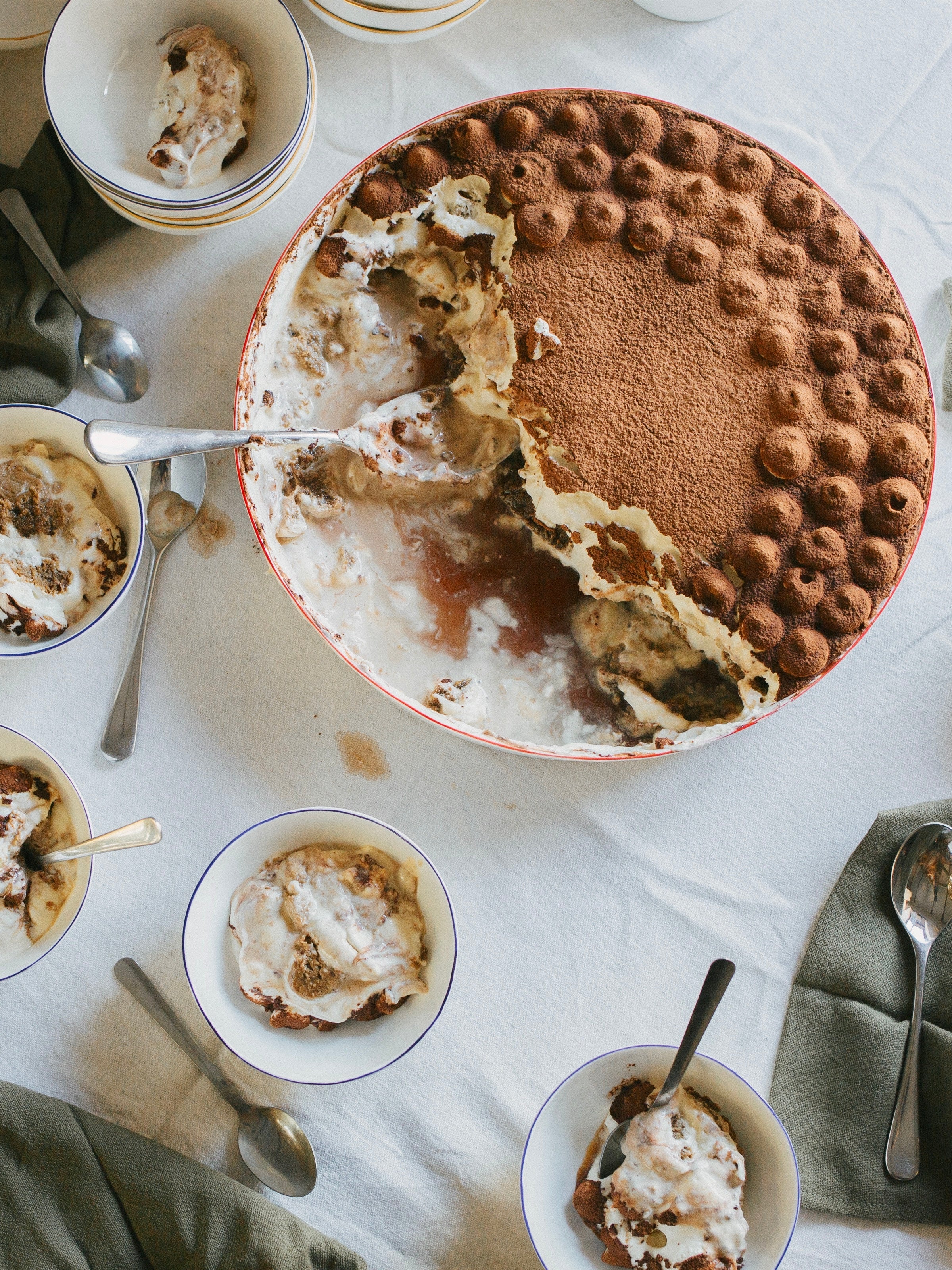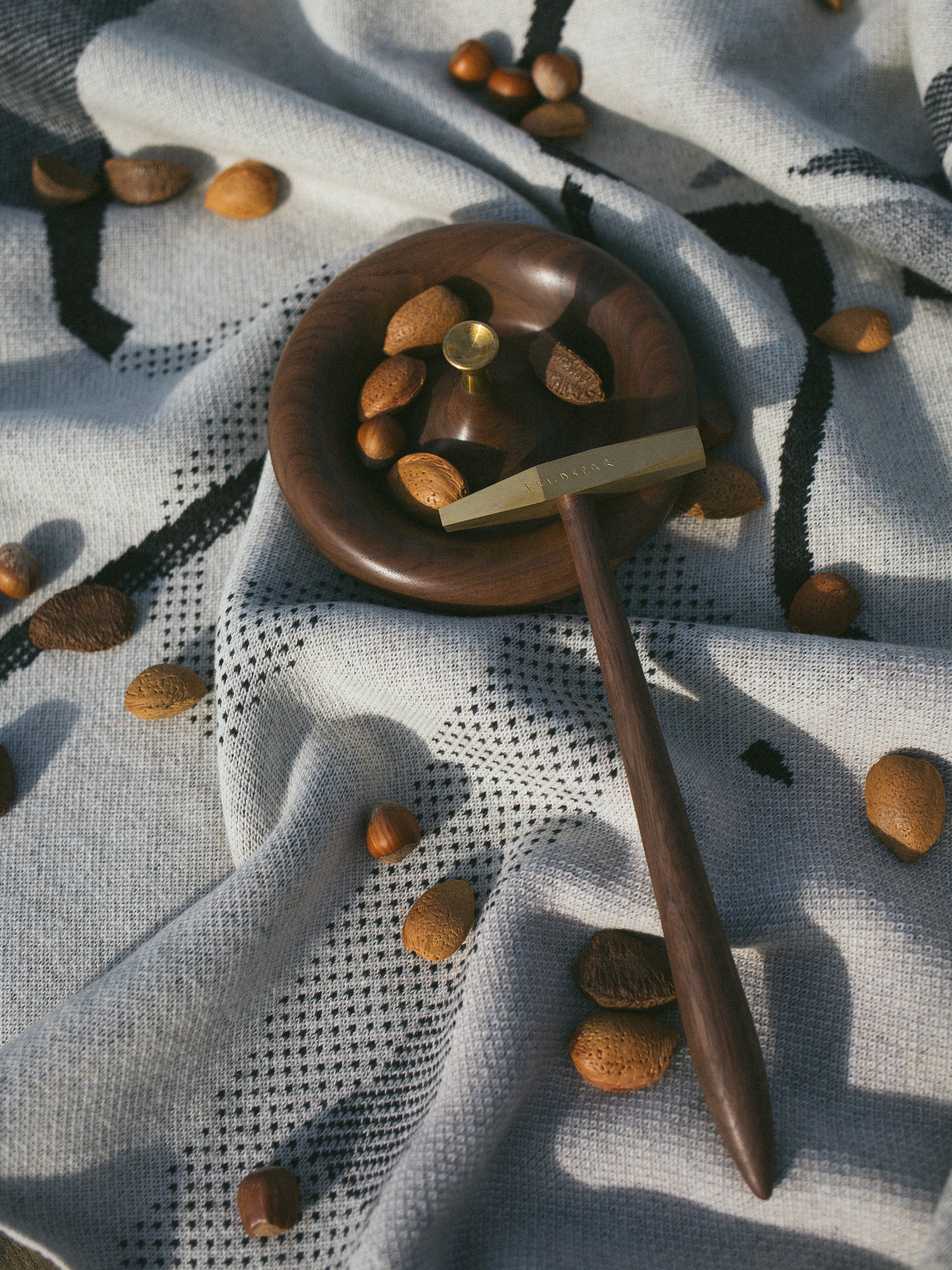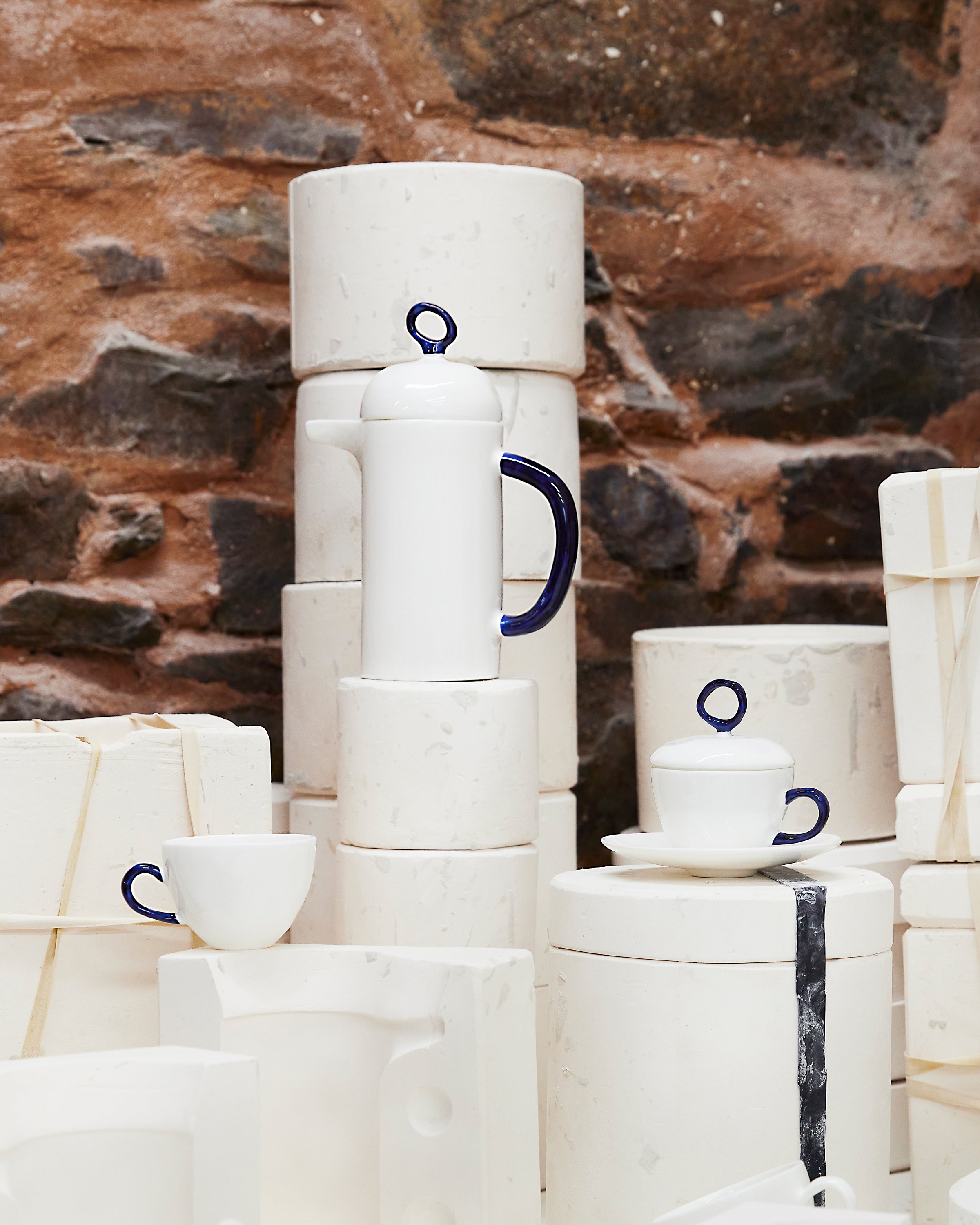How We Make It
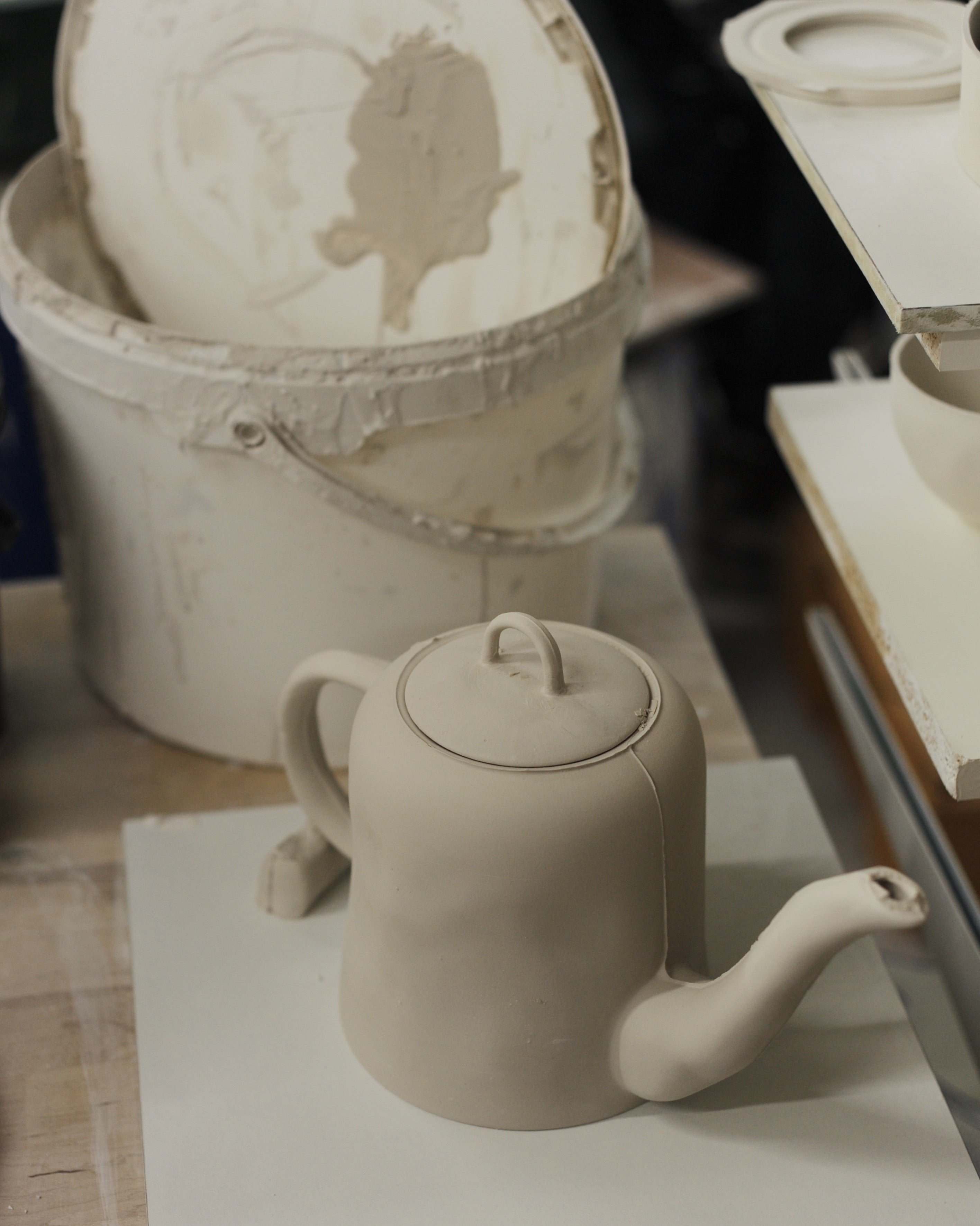
FINE BONE CHINA
We make all of our ceramics out of fine bone china. Fine bone china is the strongest type of ceramic - invented by Josiah Spode in the 18th century, it contains both china clay from Cornwall and bone ash, which means that the walls of the vessel can be cast very finely, making it translucent when put up to light. Fine bone china production has a long history up in Stoke on Trent, but nowadays it is sadly listed as a ‘critically endangered’ industry here in the UK by the Heritage Crafts Association - most of the factories up there have closed down, and to actually make china from start to finish in the UK is becoming a very rare thing indeed.
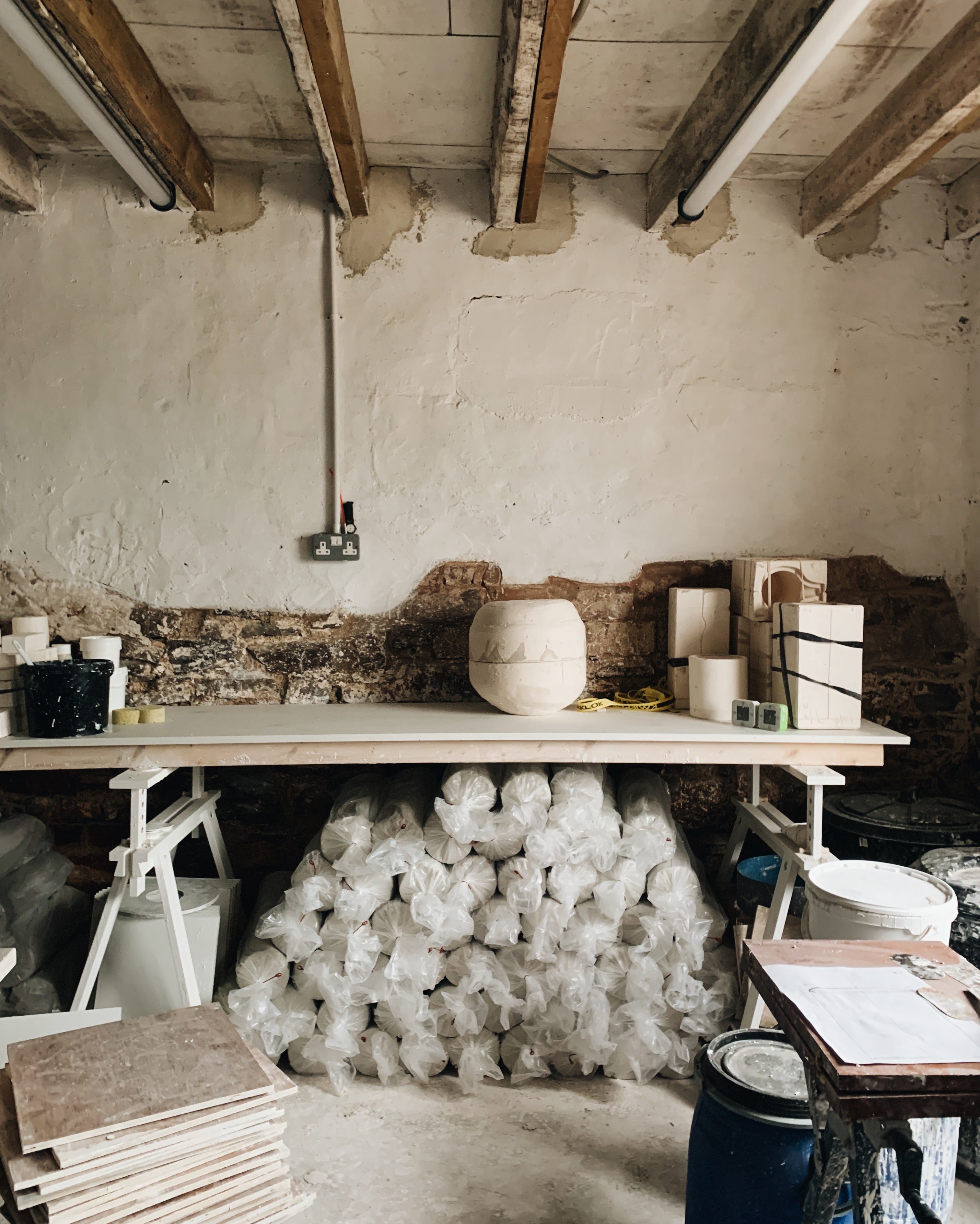
SLIP
Our clay comes to us in blocks, which are broken up and fed into a machine called a Blunger - essentially a giant blender, churning the clay and the water and an added flocculant into a homogenous liquid clay called a ‘slip’. This is what we use to cast all of our ceramics.
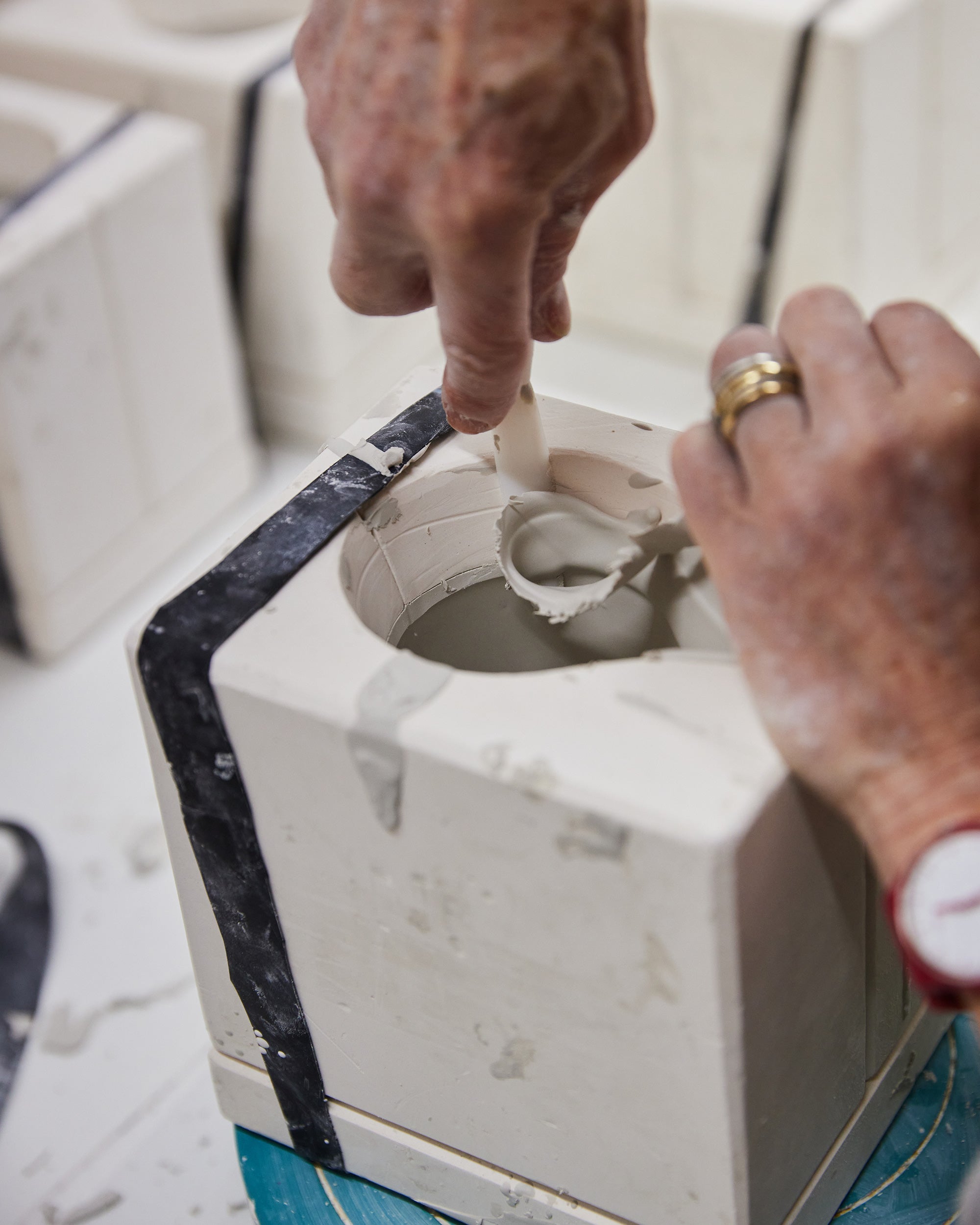
ALWAYS BY HAND
Slip-casting, the traditional process we use to make our ceramics, is a technique by which the liquid clay is poured into plaster moulds. The plaster of the moulds draws out the water from the slip that is touching it, thereby creating the walls of the vessel when the excess slip is poured out. Sometimes, very faint slip trails can be seen on the finished plates and bowls - a trait we embrace as a marker that our wares are painstakingly handmade and not made by industrial machines (like almost all other china plates). This method is a labour of love and we want to celebrate that, not hide it.

PLASTER MOULDS
The moulds themselves are handmade in our workshop. First a plaster model of the vessel is made, and then - using a specialist harder plaster - a mould is made of that model. The model needs to be 15% larger than the finished product, to account for the shrinkage of bone china when in the kiln. Some moulds are single pieces, some are two-parts, and some even more. The more complex the shape, the more complex the mould.
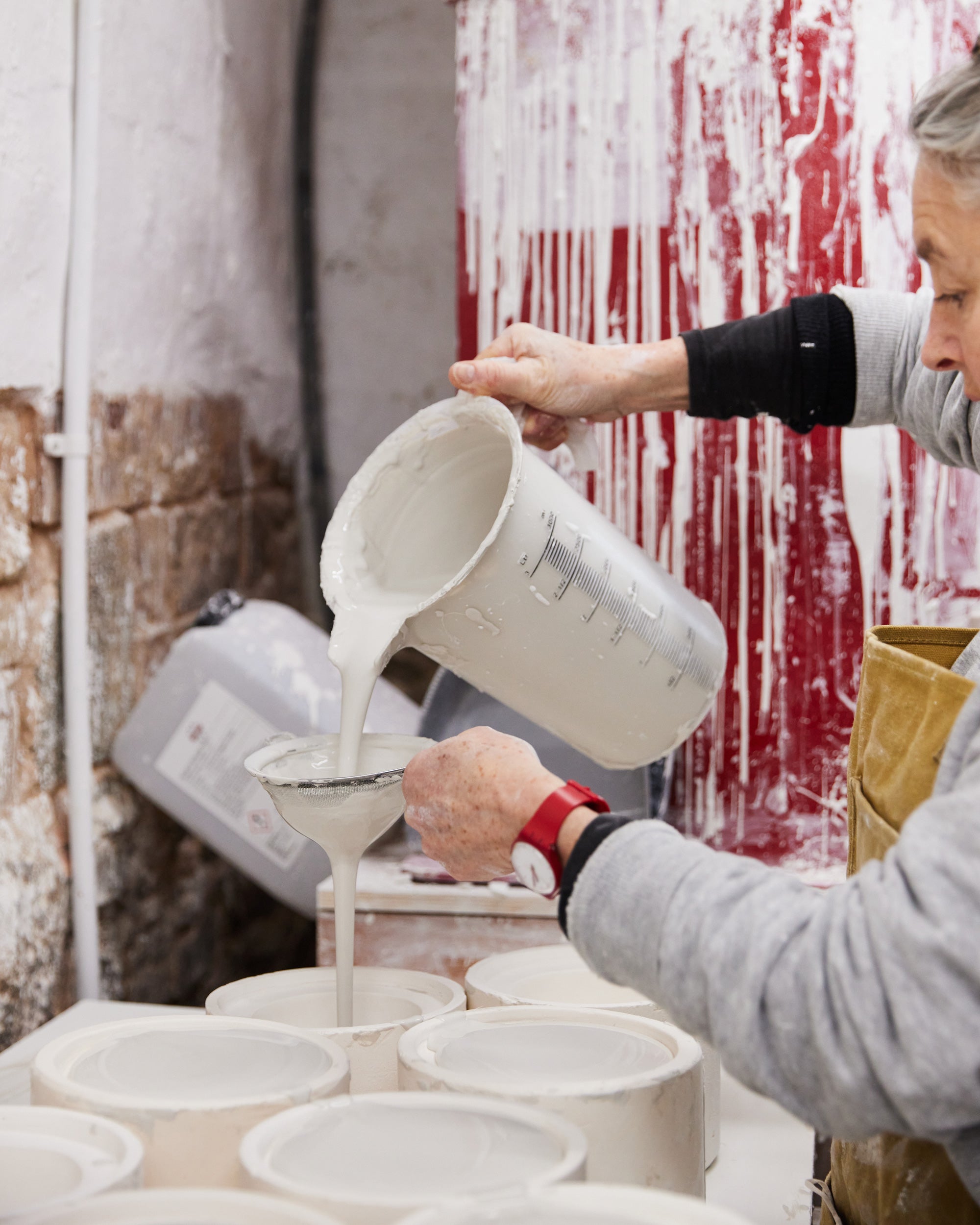
CASTING
Slip is poured into the moulds and then they are left for an allotted amount of time depending on how thick we want the walls of the vessel to be. When the timer has gone off, the excess slip can be poured out to be reused, leaving the clay walls of the vessel inside the mould. It is then left to dry until it is leather hard so it can be handled.
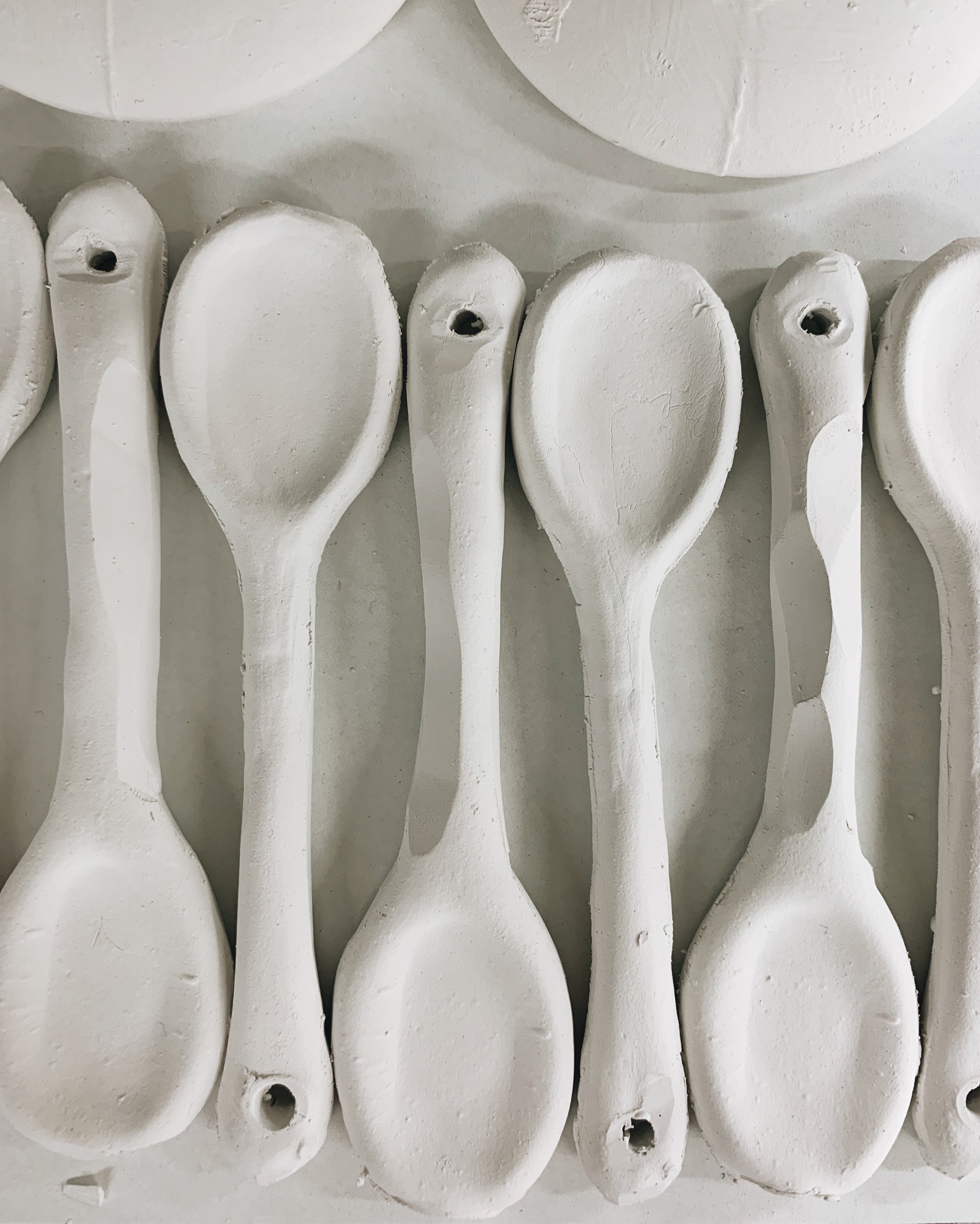
SPONGING & FETTLING
When the wares are taken out of their moulds, they then need sponging and fettling to ensure there are no sharp edges or - in the case of more complex multi-part moulds, seams - and that the entire object has a smooth finish.
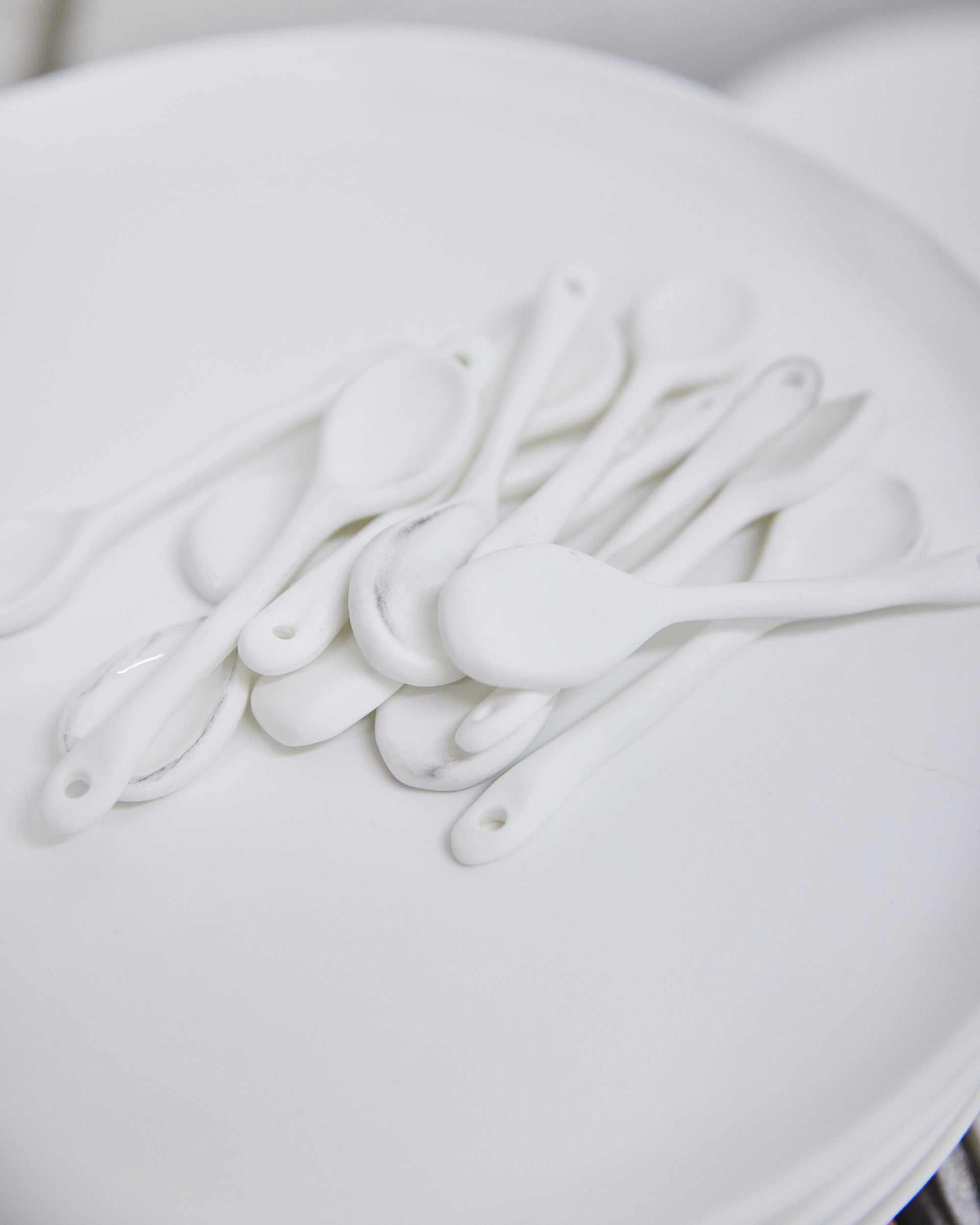
BISCUIT
The ware is then left to dry completely before being bisque fired. This is the first of 3 firings, and the hottest. This firing vitrifies the clay and transforms it into the solid, hard ceramic. There are various tests to check whether a firing has been successful, including if you can’t see your hand through it when it is held up to the light - these items are re-fired. It has a chalky matt finish at this stage and looks like bone.
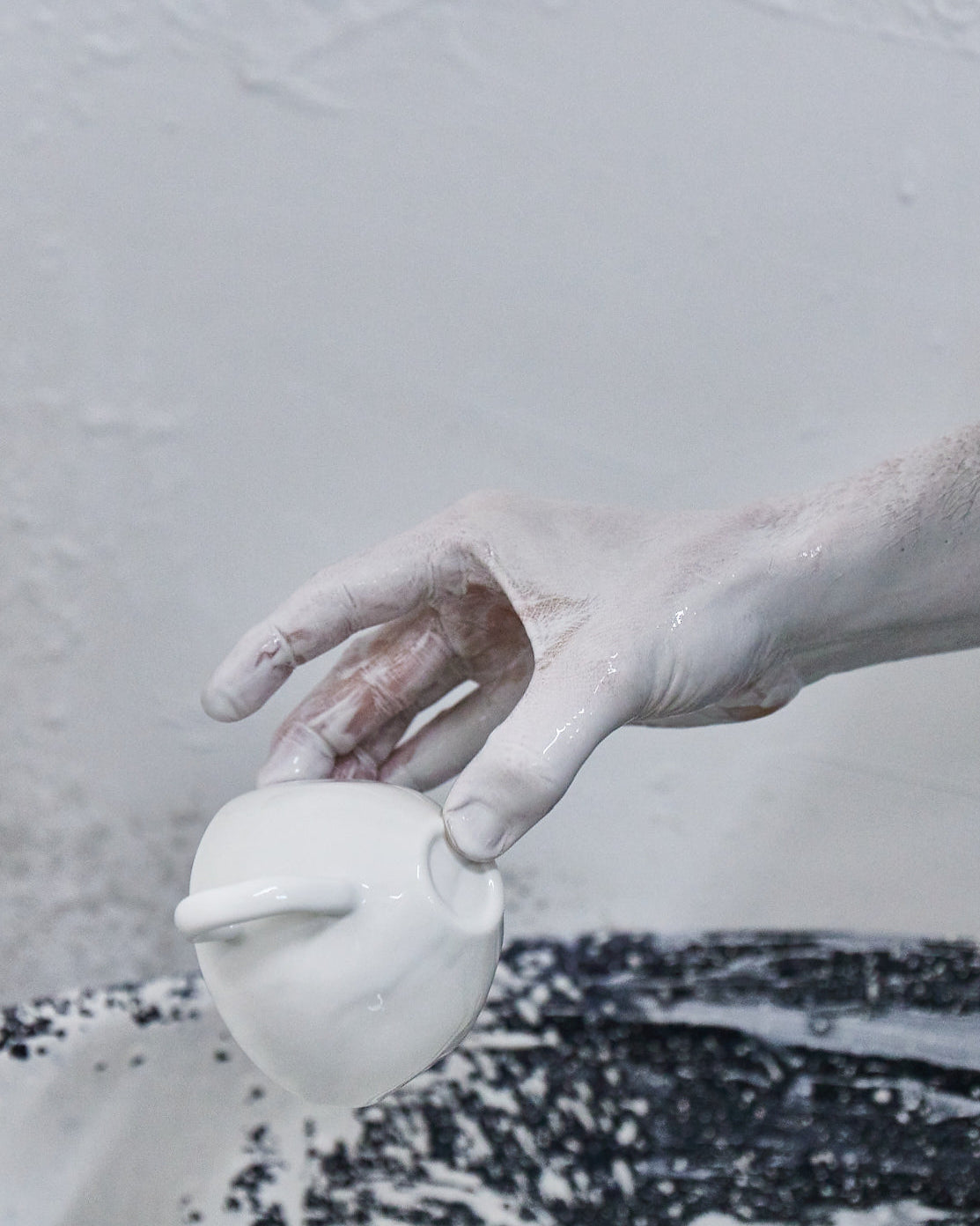
GLAZING
After being bisque fired the bone china is fully vitrified and is now a solid form, ready to be sanded and glazed. Our glossy, translucent glaze is essentially a fine layer of glass that our wares are dipped into, left to dry and then any excess is sponged off the bases before they are fired again, their second firing, to turn the glaze into a shiny solid layer protecting the ceramic. While traditionally lead was used in glazes, we use a lead-free formulation.
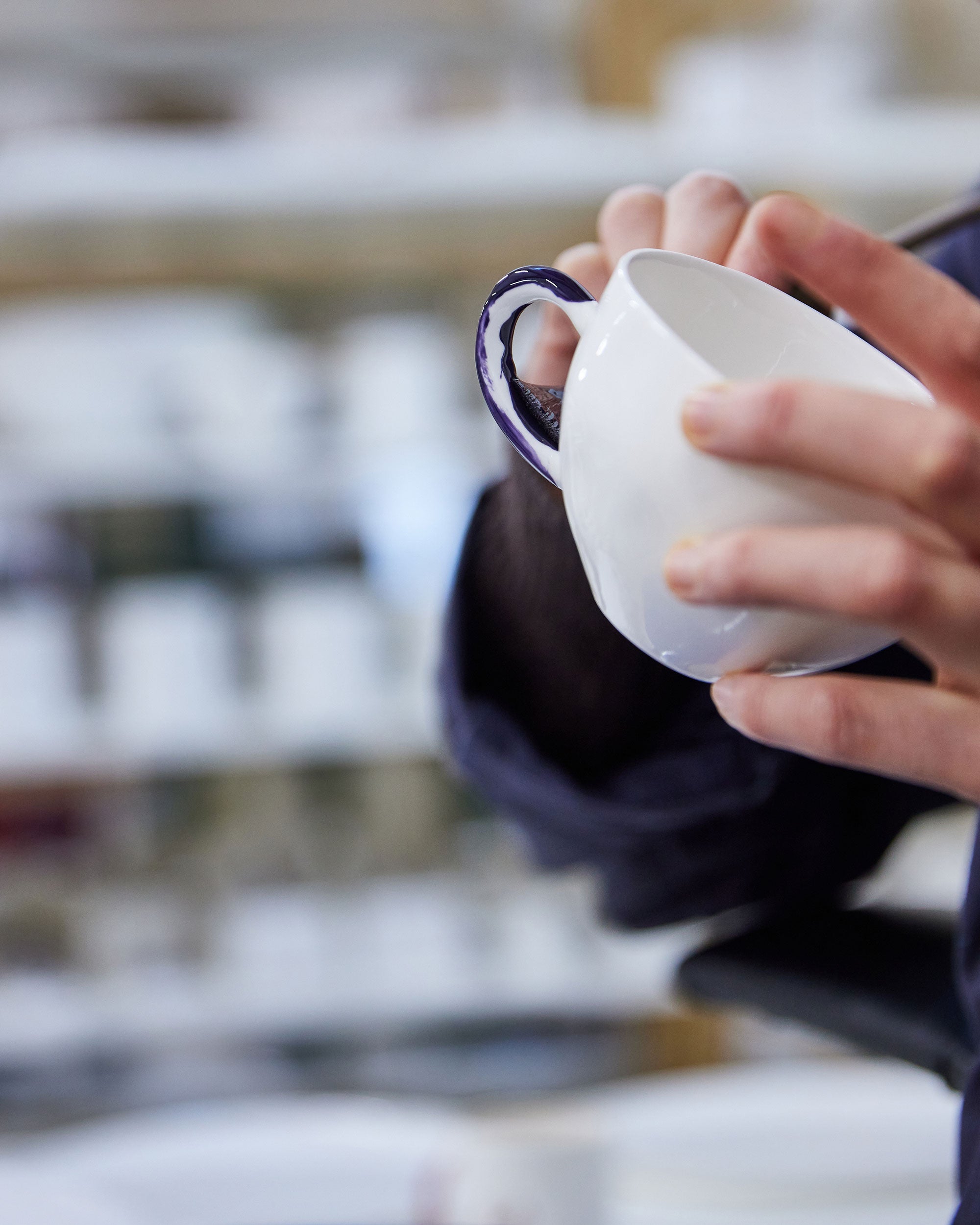
HAND PAINTING
Everything is now checked over for any imperfections and then hand painted using a specialist ‘on-glaze’ paint. We use mainly Cobalt and gold - the gold is actually 24ct gold suspended in a medium that paints on a deep dark brown and then, after being fired for the third and final time - seemingly magically comes out a bright shining gold. All of our ceramics are hand painted by the steady and careful hands of our decorating team here in Devon.

PACKAGING
We then check and package everything up, ready for their new homes. For more information on our packaging, please see our Packaging page - we’re a little bit obsessed with how our goods reach you…


